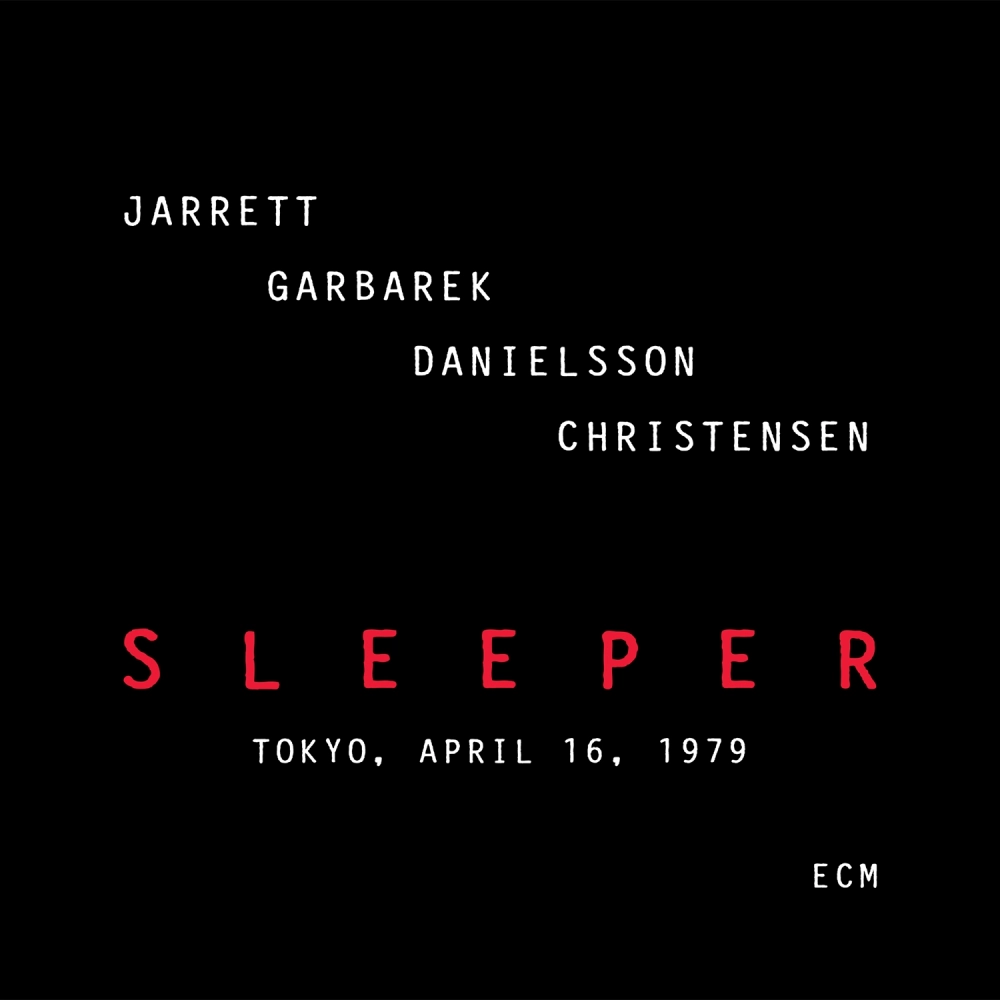An astonishing double-album documentation of a great band at the peak of its powers, “Sleeper” features a complete and previously unreleased concert recording of Jarrett’s ‘European Quartet’, otherwise known as ‘Belonging’, at Tokyo’s Nakano Sun Plaza in April 1979. The pieces played, all composed by Jarrett, are “Personal Mountains”, “Innocence”, “So Tender”, “Oasis”, “Chant of the Soil”, “Prism” and “New Dance”. Exceptional improvisational exchanges, dynamic episodes of surging energy, and lyrical passages of wild beauty abound. The interplay between Jarrett and Garbarek is uncanny and the Danielsson/Christensen rhythm team swings wildly and delightfully. After more than three decades in the ECM archive, this “Sleeper”, newly mixed in Oslo, now awakes in all its glory.
Sleeper
Keith Jarrett, Jan Garbarek, Palle Danielsson, Jon Christensen
- CD 1
- 1Personal Mountains
21:12 - 2Innocence
10:47 - 3So Tender
13:27 - CD 2
- 1Oasis
28:13 - 2Chant Of The Soil
14:52 - 3Prism
11:15 - 4New Dance
07:07
“Sleeper” is a significant addition to the group’s small discography, until now comprised of the albums “Belonging” (1974), “My Song” (recorded 1977, released 1978), “Nude Ants” (recorded 1979), and “Personal Mountains” (1979, released 1989). The pieces performed by the quartet on April 16, 1979, at Tokyo’s Nakano Sun Plaza were Jarrett compositions – “Personal Mountains”, “Innocence”, “So Tender”, “Oasis”, “Chant of the Soil”, “Prism” and ”New Dance” – all written for this ensemble (in later years, “Prism” and “So Tender” would be reinterpreted by the “Standards” trio), all delivered with enormous verve. This was a group that could play very freely, and joyously, inside the melodic and rhythmic structures set up or implied by Keith Jarrett’s writing, with an extraordinary and unforced sense of flow. As Jarrett said at the time: “I myself, as a so-called leader, wish very, very often to blend with the other three musicians and that situation [the Belonging band] allows that, because no one is fighting with anyone else. Everyone is just trying to make the thing transparent and clear and feeling good.”
Throughout “Sleeper” exceptional improvisational exchanges, dynamic episodes of surging energy, and lyrical passages of wild beauty abound. The interplay between Jarrett and Garbarek is uncanny, and the Danielsson/Christensen rhythm team swings wildly and delightfully. Jan Garbarek wrote about the Belonging experience in the liner notes to his Selected Recordings collection a few years ago: “It was a crucial time for me as a young and relatively inexperienced musician to work closely with someone so musically advanced as Keith, and I feel I benefited tremendously from it. His touch, his chord movements, the always present rhythm, the surprising melodic turns, the ability to make the piano sing in such a unique way, complexity and simplicity, abstraction and earthiness hand in hand… I was more or less in awe the whole time, not always wanting to join in with what was going on between Keith, Palle and Jon, I just enjoyed listening to them so much! The one thing that stands out in my memory, though, was the way we would play melodies in unison, in fact I felt very much a sense of unison with the way Keith made music as a whole, as if belonging…”
The Belonging quartet came together initially for the album of the same name, and the musical compatibility of its members was instantly striking. Jarrett had been well aware of these musicians since the late 1960s, had played with Palle Danielsson and Jon Christensen in Norway, and his admiration for Jan Garbarek’s saxophone approach had already led him to write the string music of “Luminessence” for Garbarek to play over.
In the five years between the first album and the end of the story Belonging played infrequently enough for Jarrett to tell one journalist that it was less an ensemble than a ‘special event’. The pianist had other pressing demands on his time, then, including tours with a demanding American quartet in the final phase of its existence, and a burgeoning concert life as a popular solo improviser. In between, there was Belonging. Jarrett wrote music for the strengths of the individual players and for the sound they created as a unit, and. the classic “My Song” album was recorded in 1977 after a series of nine concerts with the ECM touring festival, “Evenings of Improvised Music.”
In 1979 came the tour of Japan from which “Personal Mountains” and now “Sleeper” were drawn and, the following month, the New York concerts at the Village Vanguard that generated the “Nude Ants” album. And then the story was finished. As Ian Carr was to observe in his Jarrett biography, “The influence of this quartet is out of all proportion to its brief life. Musicians on all instruments have been influenced and inspired by Keith Jarrett’s work in general, but also by this quartet in particular. The European Quartet ceased to exist when it was at the height of its creativity.” “Sleeper” confirms that this was indeed the case.
You need to load content from reCAPTCHA to submit the form. Please note that doing so will share data with third-party providers.
More InformationYou need to load content from Turnstile to submit the form. Please note that doing so will share data with third-party providers.
More InformationYou are currently viewing a placeholder content from Facebook. To access the actual content, click the button below. Please note that doing so will share data with third-party providers.
More InformationYou are currently viewing a placeholder content from Instagram. To access the actual content, click the button below. Please note that doing so will share data with third-party providers.
More InformationYou are currently viewing a placeholder content from X. To access the actual content, click the button below. Please note that doing so will share data with third-party providers.
More Information



















